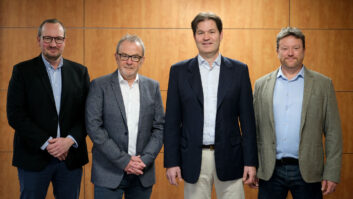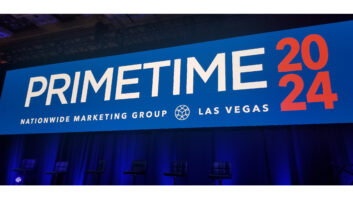Newton, Iowa-Bill Beer, back less than two months as Maytag’s majap division president, has hit the ground running. But the state of the major appliance industry, and his company’s moribund earnings, suggest that he has a tough sprint ahead.
Beer had assumed the top division slot in 1998, but was swept aside two years later by then-CEO Lloyd Ward, who was implementing a new corporate course. Ultimately, Maytag’s board of directors differed with Ward’s direction, and replaced him with former chief executive Len Hadley, who in turn brought back Beer.
TWICE caught up with the newly returned president during the recent Builders Show in Atlanta. Only five days into his second term, he had already met with Maytag’s largest national accounts, addressed independent dealers during the Nationwide buying group’s annual convention, and was now embracing the homebuilders’ channel and meeting the press.
In the resulting no-holds-barred interview, Beer discussed slumping appliance sales, the changes in Maytag’s executive suites, channel conflict and other hot-button industry issues.
TWICE: How does it feel to be back?
BILL BEER: Great. A five-month sabbatical gives you a different perspective. You begin to get jaded after 26 years in the business.
The reason I was able to come back is because I’m so aligned with the direction of our current CEO, which is to reinvest in our core business.
Lloyd Ward launched a lot of good initiatives. Some continue, but too many were growth opportunities that came at a time when we needed to focus on our core business. We were taking our eye off that and were over-focused on the price side, even though appliances represent one of the best values for consumers.
Maytag began as a laundry business. We then extended our breadth with cooking and refrigeration, added brands, and added depth. We would strengthen our core and then extend the ends.
Recently, we were too focused on extending the ends. We haven’t been feeding the core as we had in the past and weren’t focused on core channels of distribution, namely the independents.
TWICE: They’ve certainly felt unloved.
BEER: Maytag has not done as good a job in the last two years supporting in-dependents. You can’t ignore them. Big-box retailers come and go, but independents’ share of the business is still enormous.
Yes, you need big-box chains as a national umbrella in the marketplace. You can’t ignore the foot traffic they generate, and we have to go where the business is being done. But the independent is the cornerstone of the business and is counting on manufacturers for support. They need service training, retail sales training, regional distribution and logistical support.
TWICE: So how do you quell channel conflict?
BEER: I think there’s a strong place for derivative models. Consumers don’t like to be confused with model numbers and buttons, so you provide mainline product across all channels and then offer selective models within those channels.
TWICE: Maytag, along with your major competitors, has been in a sales and earnings slump. What’s the problem?
BEER: There’s a big difference between missing analysts’ expectations and not making money. We did make money. And internally, we’re making investments to create innovations. We had a 45 percent increase in laundry R & D. We’re stepping spending up another level and driving a constant stream of innovative products with meaningful improvements, like the Neptune washer, which gets clothes cleaner and saves water.
But uncovering consumer insights costs money. You can’t build it first. You need to shadow people at home, study consumer behaviors in the kitchen.
TWICE: Still, business is clearly off. How much of it is recession related?
BEER: The economy has taken a breath. The question is, will it take another deep breath or exhale? Right now the industry is flat, but flat ain’t so bad at these levels, compared to the all-time record shipments we saw last year.
We’re not planning for a recession, and we expect some growth over last year. I haven’t spoken to one homebuilder here that said housing starts are slower. At the Nationwide meeting, not one dealer said sales were down.
Besides, we can change our destiny more by what we do than what the economy does. We shouldn’t worry about the economy, we should worry about the consumer. If this is a wear-out rather than a wear-in industry, then we’re shackled by the economy. But we’re expecting to sell more appliances this year.
TWICE: Have you been able to replace volume lost by the departures of Circuit City, Wards, Roberds and chunks of Heilig-Meyers? And which retailers are picking up that market share?
BEER: For us, January was higher than the year-ago period, so we are replacing volume.
I think Circuit’s volume is being spread out evenly. Buying groups have said their share is up. I think the Circuit shopper would tend to go to an independent, while the Wards shopper would go to Sears.
I’ve spent time with the smaller dealers and have spoken with the largest dealers, and the feeling is that this industry will not sell one less appliance because of Wards, Heilig-Meyers or Circuit. Consumers buy appliances.
TWICE: What are the biggest challenges facing the industry?
BEER: As an industry, we’ve paid too much attention to price. We’ve done things to drive our business toward a commodity business that we didn’t need to do.
In the past, any time a consumer benefit came along, like a self-cleaning oven or a defrosting freezer, people were willing to open their wallets before their old appliances wore out.
Now we have to get back to discussing product rather than price. Most consumers are willing to pay $500 for a dishwasher, but some stores trade them down.
Another issue is the level of competency to install, deliver and service the products. It’s still there now, but I’m concerned about the future.
TWICE: Anything else?
BEER: Successful companies have three things in common: Great service and products that people are willing to pay for; strong brands; and committed partners. In this industry, that last point is where the biggest gap is. We have a very clear recognition that you can’t win by yourself. If people on the upstream side-suppliers-aren’t successful, you won’t be.
The same holds true for the downstream. Dealers, from Home Depot to Abt, need committed partners, and I just think we spend too much time beating up each side.













